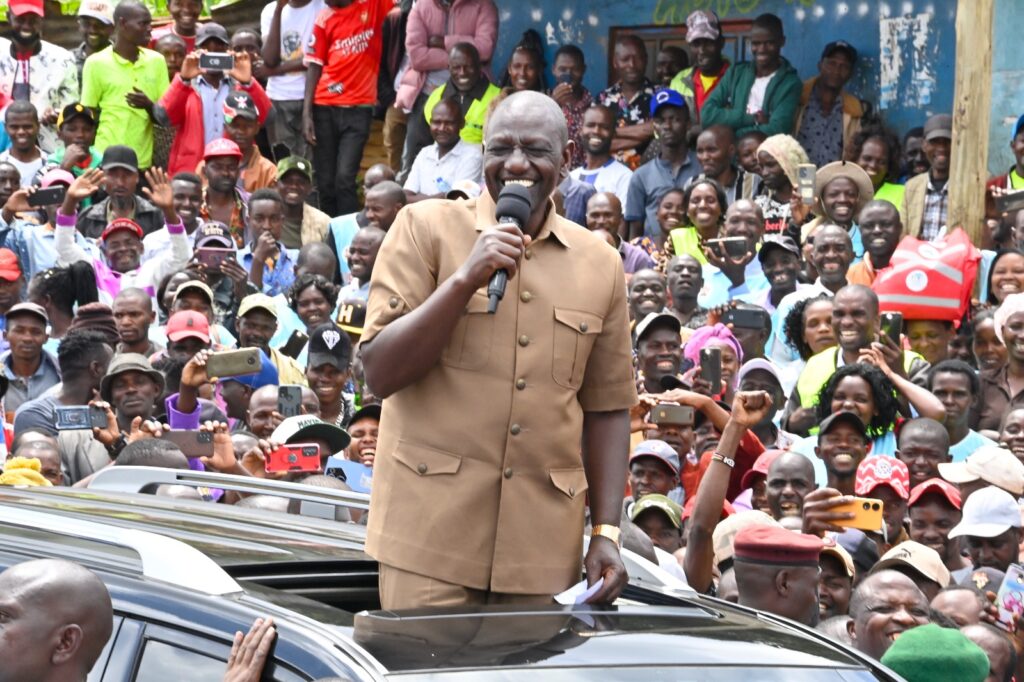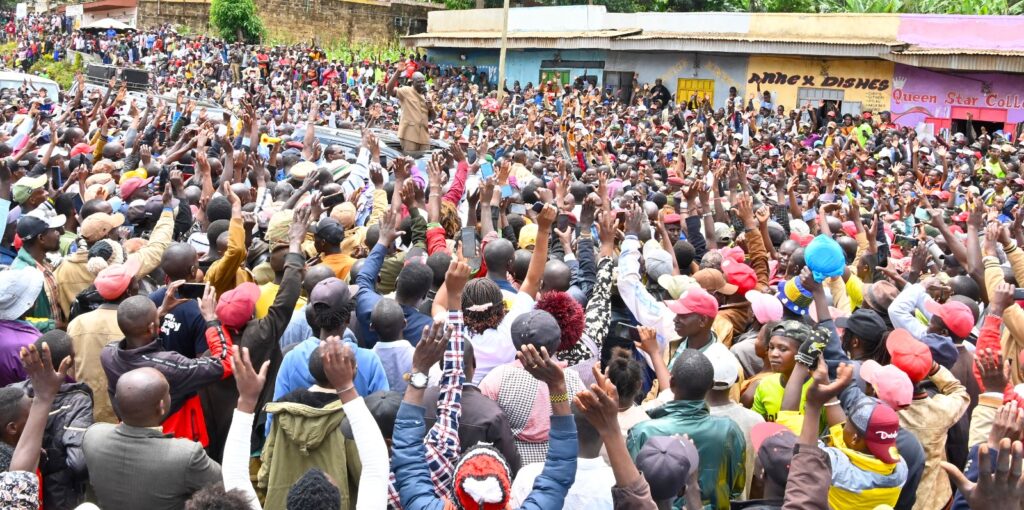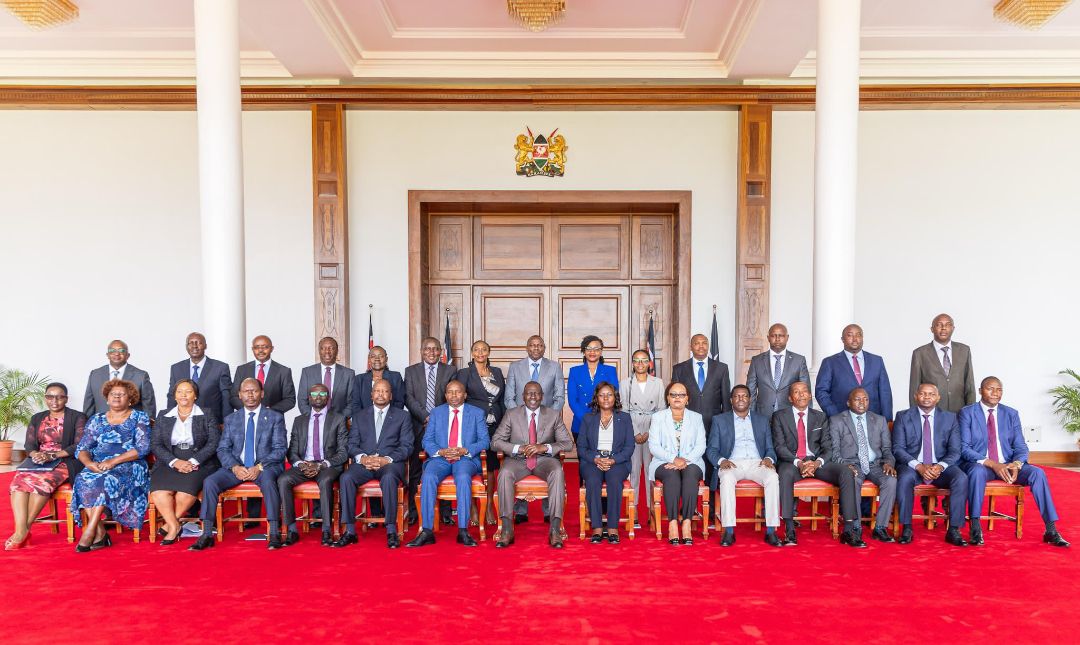By Raphael Wanjala
President William Ruto is poised to embark on a significant tour of Kenya’s Mt. Kenya region in the coming weeks. This visit marks his first development-focused engagement in the area since the impeachment of former Deputy President Rigathi Gachagua in October 2024—a political upheaval that has left the region’s political landscape in flux. The tour is seen as both a developmental and political maneuver aimed at consolidating support in a region that played a pivotal role in Ruto’s ascent to power.
The Mt. Kenya region, historically a kingmaker in Kenyan politics, has experienced heightened political tensions following Gachagua’s ouster. The former deputy president’s impeachment has led to a discernible divide among local leaders and constituents, challenging the unity that once characterized the area. Gachagua’s subsequent formation of a new political party has further complicated the region’s political dynamics, introducing a new dimension of rivalry within Ruto’s traditional support base.
In anticipation of President Ruto’s visit, Interior Cabinet Secretary Kithure Kindiki convened a strategic meeting at his Karen residence. The gathering included 54 Members of Parliament representing various counties within the Mt. Kenya region, such as Laikipia, Nyandarua, Nakuru, Kiambu, Murang’a, Kirinyaga, Nyeri, Embu, Meru, and Tharaka Nithi. The primary focus of this assembly was to assess the progress of ongoing development projects and to ensure that the President’s tour effectively addresses the region’s pressing needs.
Central to the discussions was the emphasis on prioritizing projects with secured funding to prevent the embarrassment of stalled initiatives. Prof. Kindiki underscored this point, stating, “We don’t want embarrassing moments where the President launches a project and then it stalls midway.” The MPs were urged to provide accurate progress reports on various initiatives to avoid logistical mishaps and ensure that Ruto’s visit delivers tangible outcomes.
President Ruto’s itinerary is expected to encompass the inauguration and inspection of several key infrastructure projects:
Road Infrastructure: The completion of the Mau Mau roads and the Kenol-Marwa dual carriageway is anticipated to enhance connectivity and stimulate economic activities within the region. These roads are crucial for linking remote agricultural areas to major markets, thereby reducing transportation costs and post-harvest losses.

Water Resource Management: The President plans to launch major dam projects aimed at improving water distribution and expanding irrigation capabilities. Projects such as the Thiba Dam and others under construction are expected to boost agricultural productivity by ensuring year-round farming.
Market Facilities: The construction of modern markets is set to provide local traders with improved platforms, fostering commerce and boosting local economies. These facilities are part of a broader initiative to formalize trade and enhance revenue collection at the county level.
These initiatives align with the government’s broader strategy to revitalize key agricultural value chains, including tea, coffee, milk, rice, potatoes, macadamia, miraa, muguka, and poultry. A Nyeri MP who attended the preparatory meeting remarked, “We were also briefed on policy and administrative measures the government has taken to revitalize key agricultural sectors.” These measures include subsidies, access to affordable credit, and reforms in cooperative societies to protect farmers from exploitation.
Beyond physical infrastructure, the tour will also highlight President Ruto’s administration’s commitment to social programs such as the Hustler Fund, which provides microloans to small businesses. The fund’s impact in the Mt. Kenya region, home to many small-scale entrepreneurs, will be a focal point of the President’s engagements with the public.
The forthcoming tour is not merely a developmental endeavor but also a strategic move by President Ruto to reaffirm his influence in a region that delivered a substantial portion of his electoral support. In the 2022 elections, Ruto secured 47% of his 7.2 million votes from the Mt. Kenya region, underscoring its electoral significance.
However, the political landscape has shifted since Gachagua’s impeachment. The former deputy president has been vocal in his criticism of Ruto, accusing him of betrayal and vowing to challenge his leadership. Gachagua’s efforts to establish a new political party have introduced a potential rival power center within the region, complicating Ruto’s efforts to maintain a unified support base. His rallies have drawn sizable crowds, indicating a potential shift in allegiance among some voters.
In response, President Ruto’s allies, led by Prof. Kindiki, have defended his administration’s commitment to the region’s development. They argue that Gachagua’s actions are politically motivated and do not reflect the broader interests of the Mt. Kenya populace. Prof. Kindiki has called on local leaders to “humble themselves and work with President Ruto’s administration for the benefit of area residents,” emphasizing that other regions are reaping the benefits of cooperation with the national government.

Residents of the Mt. Kenya region have expressed a mix of anticipation and skepticism ahead of the President’s visit. While there is hope that the tour will bring much-needed development and address longstanding infrastructural challenges, some community members are wary of the political undertones accompanying the visit. “We want to see roads completed, not more promises,” said a trader in Murang’a, reflecting the cautious optimism among the public.
Local leaders have echoed these sentiments, urging the President to prioritize development over political maneuvering. They emphasize the need for tangible improvements in infrastructure, agriculture, and commerce that directly impact the livelihoods of the region’s residents. Youth unemployment, access to affordable healthcare, and education infrastructure have also been highlighted as critical areas needing urgent attention.https://touchdigitalnews.com/speaking-with-gratitude-and-humility-ndindi-nyoro-emphasized-his-commitment-to-public-service-and-his-personal-growth-throughout-his-tenure/
Analysts view the tour as a litmus test for President Ruto’s ability to maintain his political grip on the region. Successfully navigating the intricate web of local politics while delivering on development promises is crucial to restoring confidence among the Mt. Kenya electorate and countering narratives of neglect or betrayal.
President William Ruto’s impending tour of the Mt. Kenya region represents a critical juncture in his administration’s relationship with this influential area. The visit offers an opportunity to reinforce commitments to development, mend political rifts, and reengage a constituency that has been instrumental in his political journey. It also presents a chance to showcase his leadership style as inclusive and responsive to the needs of diverse regions.
As preparations intensify, the focus remains on ensuring that the tour translates into concrete benefits for the residents of Mt. Kenya. The outcomes of this visit will likely have lasting implications for the region’s political alignment and its developmental trajectory in the years to come. Whether Ruto can reignite the trust and support of Mt. Kenya remains to be seen, but the stakes are high for both the President and the region as they chart a path forward amid a changing political landscape.

https://honda-fit.ru/forums/index.php?autocom=gallery&req=si&img=6933